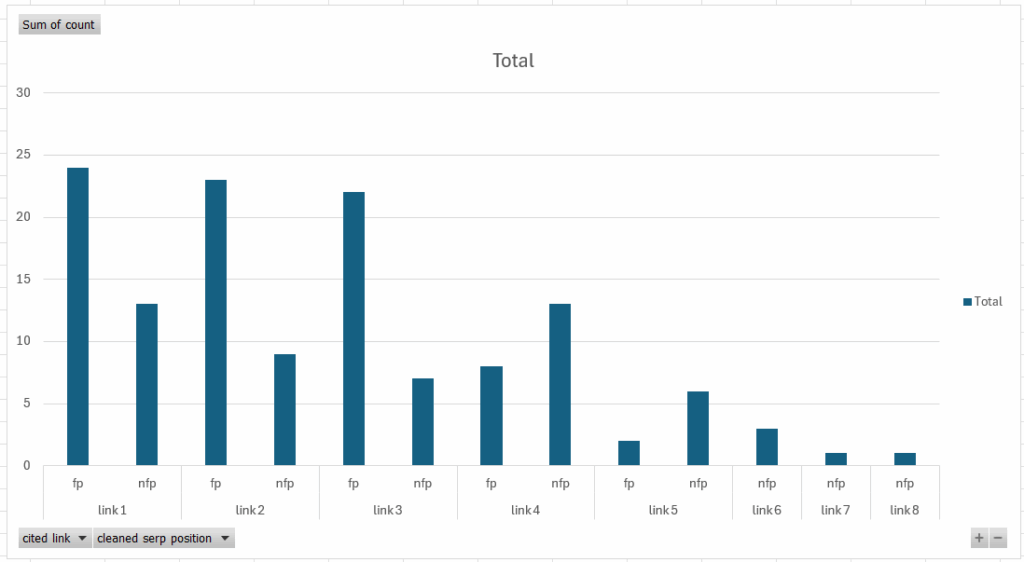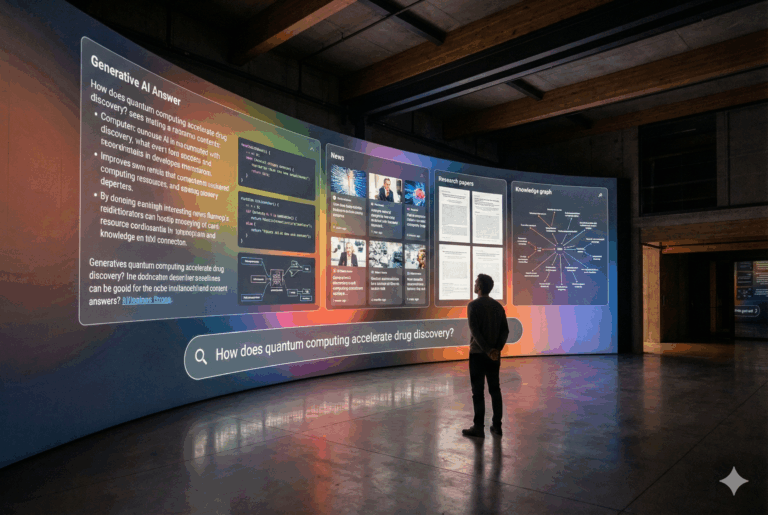AI platforms like ChatGPT and Google AI Overviews are making waves, reshaping how users access information. But here’s the thing most analyses miss: while these tools offer immense potential, the majority of users aren’t actually replacing search engines with AI. Recent findings from SparkToro reveal that most prompts given to Large Language Models (LLMs) are task-driven or creative, not traditional “search queries”. The implication? AI tools aren’t sweeping search engines aside but carving out a distinct role in the digital landscape.
For marketers and content creators, this insight shifts the focus. If AI platforms like ChatGPT are not primarily being used as search replacements, does visibility in their outputs still matter? My original research says it does—but it also demands a pivot in strategy to address how users engage with these platforms and their citations.
I’m Mike Emiliani, and I received the Integrated Search Marketing Award in 2018. I have been a guest lecturer and subject matter expert on digital marketing and advertising at Endicott College as well as a judge for the EU Search Awards and US Search Awards. These experiences have given me invaluable insights into shifting digital environments, including the rising influence of AI.
In this article, I will explore the current AI search landscape and discuss the results of my experiment, along with specific recommendations for how to succeed in search and citation.
Understanding the Role of Large Language Models in Search
LLMs are not simply replacing search engines as we know them. Instead, they’re becoming specialized tools for tasks that go beyond what search engines traditionally address. Users are turning to AI for content creation, brainstorming, coding assistance, summarization, and even entertainment, rather than seeking straightforward answers to queries.
This divergence plays a critical role in how content is consumed and cited:
- AI-driven prompts often focus on refinement rather than discovery. A user might not ask ChatGPT, “What is SEO?” but they might ask it to rewrite a meta description or create an outline for an SEO strategy.
- AI tools bridge gaps between creative tasks and utility. Traditional search engines serve information seekers; LLMs cater to creators and problem-solvers.
If your content also supports application, synthesis, or deeper exploration, it gains an edge in being cited by AI systems.
Experiment Overview: Investigating AI Citation Patterns
Against this backdrop, I designed an experiment to uncover patterns, investigate key factors, and answer pressing questions. Does being on the first page of Bing matter? How much overlap exists between traditional search rankings and AI-cited content? And what role does content structure or framing play?
Here’s how I did it:
Methodology Breakdown: Designing Prompts and Tracking Citation Behaviors Across Industries
I started with a controlled process:
1. Subjects
Two small businesses served as subjects, one in logistics and freight and the other in exotic currencies. This diversity allowed us to assess multiple prompts across different fields.
2. Prompt design
I devised 20 task-oriented queries, framed as practical and creative requests. These prompts tested ChatGPT’s citation preferences and assessed how they intersected with traditional search engine rankings.
3. Tracking and Analysis
For each prompt entered into ChatGPT, I tracked the links cited. Using Bing SERPs as ChatGPT’s known backbone, I compared the cited pages with search rankings to examine patterns.
Results: AI Citation Patterns and Their Relationship with Search Rankings
The results revealed fascinating insights into ChatGPT’s citation behaviors and the surprising ways this tool selects sources:
1. Bing Dominates Citation Logic
Nearly 60% of top-cited links in ChatGPT outputs were also on Bing’s first page for the corresponding query. This highlights Bing as a critical foundation for AI citations.
Crucially, though, citations beyond the top three links often pulled from pages not found on Bing’s front page, reflecting AI’s tendency to incorporate sources outside conventional SEO rankings.
2. Secondary Citations are Common
The second-largest group of citations fell into the “not found on first page” bucket. ChatGPT often brought in additional sources beyond Bing’s algorithmically determined top answers for prompts with multiple citations. Simply put, AI engines apparently balance ranking signals with a need for variety or additional context.
3. AI Balances Between Ranked Search Results and Contextual Variety
The AI often referenced secondary sources to provide additional context, rather than exclusively pulling from top-ranked results. These selections suggest AI tools rely on thematic variety to craft more comprehensive responses.
4. The Influence of Framing Keywords
When a prompt included specific keywords tied to front-page results on Bing, ChatGPT’s first or second citations frequently aligned with that content. This suggests that exact-match framing in your content remains a valuable tactic to increase visibility in AI-generated outputs.
Study Limitations and Factors to Consider
While this experiment’s results are valuable, certain limitations must be acknowledged:
1. SERP Variability
Bing served slightly different results for the same queries on repeated attempts. Variability in search results might influence which sources AI engines pull from at any given time.
2. Partial Brand Representation
Sometimes, Bing ranked different pages from the same domain on the first page, leading ChatGPT to cite the broader brand but not the original linked content.
Implications for Content Strategy Beyond The First Page
Of course, as SEOs, we want to get in the first few results for relevant SERPs. However, these findings reinforce one clear takeaway for content creators and businesses: authority and relevance beyond first-page results matter.
If your content ranks on Bing’s front page, it significantly increases its chances of appearing in ChatGPT’s citations. However, our results also show that being the definitive source isn’t always required. A well-structured, context-rich page might still find its way into AI citations, even if it isn’t a top-ranking result.
So why does ChatGPT cite links outside Bing’s top results? One potential answer is that, in cases of parity among several valid answers, AI deliberately selects less prominent resources to add variety or additional perspectives. This behavior might stem from a directive to promote breadth in responses.
Actionable Strategies For Winning AI Citations
Considering the complementary nature of AI search to traditional search, we recommend extending your content to create a more engaging content ecosystem. Here are our suggestions for action you can take based on our findings:
1. Double Down on Bing Visibility
Bing’s SERP results remain foundational for task-specific or straightforward search prompts for AI tools. To rank well:
- Strengthen on-page SEO with Bing’s preferences in mind, such as favoring rich visuals or video integrations.
- Focus on backlinks curated from domain-specific websites.
2. Optimize Content for Task-Based Queries
Think about why users consult AI tools versus search engines and include those considerations in your content strategy.
- Provide flexibility in content design. Can a guide double as a worksheet? Does a blog post contain quick, actionable takeaways AI could easily include when synthesizing?
- Integrate multiple entry points within your content. For example, break long content into modular sections with strong headlines that guide AI systems toward relevant snippets.
3. Create Contextually Rich Assets
Since users turn to LLMs for creativity and exploration, you should implement tools and add-ons that serve these needs seamlessly, like interactive data visualizations or free resource downloads.
- Offer templates, how-to guides, and supplemental tools to make users’ lives easier.
- Write with flexibility in mind; content that an AI engine can summarize, adapt, and reuse has a higher likelihood of being cited.
What AI Search Means for Brand Visibility
AI tools like ChatGPT aren’t just altering where users find your content. They’re changing how they use it. Unlike search engines, which redirect users to the source, AI synthesizes and presents information, often without immediate attribution. What this means for your brand is that being cited within AI outputs relies heavily on creating content built for dynamism, depth, and adaptability.
How Content Creators Can Adapt for Task-Driven AI Use and Dynamic Citations
AI tools represent complementary, not competing, technologies to search engines. Still, the role of AI citations is critical, not as a replacement for direct traffic, but as a contributing factor to brand authority, visibility, and user trust.
Our research confirms that success in this space starts with ranking well on Bing, but doesn’t stop there. Now is the time to pivot your strategy to reflect the expanded user behaviors that define AI tools. Seek to understand the tasks and goals that LLM users are pursuing, and tailor your content accordingly.
AI isn’t the death of search engines, but it is remapping the digital landscape. To thrive in this new era, your content must seamlessly bridge both worlds.
Optimize for search, but cater to creativity. Fine-tune for citations but design for task-driven utility. When you create content that serves these diverse functions, you’re setting your brand up for relevance today and resilience tomorrow.
Is your SEO strategy ready for the age of AI search?
At Session Interactive, we craft strategies designed for today’s hybrid world of traditional search engines and AI-powered search. From task-driven prompts to creative outputs, we help your content get discovered, cited, and trusted.
Contact us today about making your content work smarter across AI and search.






